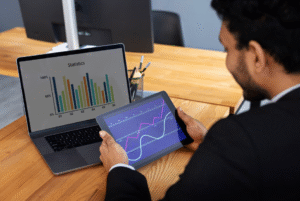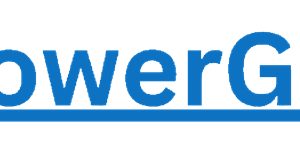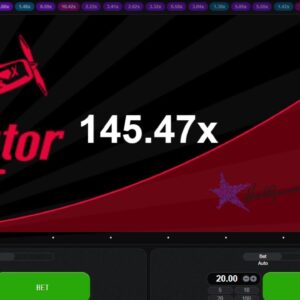As sales cycles become more complex and customer expectations rise, traditional sales strategies are no longer enough. In response, organizations are turning to artificial intelligence (AI) to empower their sales teams and gain a competitive edge. Two rapidly growing innovations in this space are Sales Forecasting AI and AI for Sales Teams.
These tools are revolutionizing how businesses predict revenue, allocate resources, and close deals. This article explores how Sales Forecasting AI enhances predictability, while broader AI applications for sales teams improve productivity, lead quality, and conversion rates—ultimately creating a smarter, more agile sales force.
What is Sales Forecasting AI?
Sales Forecasting AI uses machine learning models to predict future revenue based on historical sales data, current pipeline activity, seasonality, and market trends. Unlike manual forecasting or spreadsheets, AI can continuously learn from data, make adjustments in real-time, and deliver highly accurate predictions.
Key Features of Sales Forecasting AI:
-
Pipeline analysis and deal scoring
-
Revenue prediction by team, region, or product
-
Identification of at-risk deals and sales cycles
-
Scenario modeling (best case, worst case, most likely)
-
Real-time updates as new data flows in
By leveraging these capabilities, businesses can plan more accurately, make informed hiring and budget decisions, and respond proactively to changing market conditions.
AI for Sales Teams: Beyond Forecasting
While forecasting helps leaders make strategic decisions, AI is also directly enhancing the performance of individual sales representatives. AI for Sales Teams includes a suite of tools that support daily sales operations, such as:
-
Lead Scoring: Prioritizing prospects based on likelihood to convert
-
Sales Enablement: Personalized content suggestions during sales conversations
-
Conversational AI: Real-time coaching during calls or automated follow-up emails
-
CRM Automation: Auto-logging of meetings, emails, and notes
-
Sentiment Analysis: Analyzing customer tone and engagement to adjust strategy
These tools free up reps to focus on closing deals rather than administrative tasks and ensure every action is backed by data.
How They Work Together
Sales Forecasting AI and AI for Sales Teams are not separate tools—they are part of a connected ecosystem. Here’s how they integrate to drive better performance:
-
AI insights from sales reps’ interactions (e.g., call data, engagement rates) are fed into forecasting models to improve accuracy.
-
Forecasting AI alerts managers to areas where reps may need support—whether due to stalled deals or underperformance.
-
Sales AI tools provide reps with real-time guidance and automate follow-ups, helping them revive and close flagged deals.
This closed loop ensures that forecasting isn’t just strategic but actionable—improving accuracy and results in real time.
Use Case Example
A B2B tech company implements Sales Forecasting AI to track deal velocity and conversion trends. The system alerts leadership that deals in the financial sector are taking longer to close and are at higher risk.
Simultaneously, AI-powered sales tools:
-
Recommend tailored whitepapers to help reps re-engage financial leads
-
Automate follow-ups based on client behavior
-
Offer predictive call coaching based on top-performing reps’ patterns
As a result, the company improves forecast accuracy by 30% and reduces average deal time in the financial segment by 25%.
Benefits for Sales Organizations
-
Accurate Forecasting
Avoid over- or underestimating revenue. AI offers real-time, data-driven projections you can trust. -
Increased Productivity
Reps spend less time on manual tasks and more on selling, thanks to AI-powered automation and recommendations. -
Higher Win Rates
Lead prioritization and personalized outreach strategies help teams close more deals, faster. -
Better Coaching & Training
AI highlights where reps struggle and what top performers do differently, making coaching more targeted and effective. -
Scalability
As teams grow, AI ensures consistency across the sales process without requiring constant oversight.
Implementation Tips
-
Start with Clean Data: Ensure your CRM is up-to-date and well-maintained; AI is only as good as the data it uses.
-
Pilot in One Team or Region: Test the technology in a smaller group, analyze results, and scale gradually.
-
Integrate with Existing Workflows: Choose tools that work within your current sales stack (CRM, communication platforms).
-
Train Your Team: Provide onboarding and regular training sessions to help reps trust and use AI tools effectively.
-
Monitor and Improve: Regularly review performance and refine models based on feedback and results.
Top Tools for Sales AI in 2025
Sales Forecasting AI Platforms:
-
Clari – Revenue forecasting and pipeline insights
-
Aviso AI – Predictive sales analytics with deal health scores
-
InsightSquared – AI-based forecasting integrated with CRM
AI Tools for Sales Teams:
-
Gong.io – Conversation analytics and real-time coaching
-
Outreach – AI-driven sales engagement
-
Salesforce Einstein – Built-in AI for forecasting, lead scoring, and automation
Conclusion
As competition intensifies and customer journeys grow more complex, sales teams need more than instinct—they need insight. Sales Forecasting AI gives leadership the visibility and accuracy they need to make strategic decisions. At the same time, AI for Sales Teams empowers reps with the tools to work smarter, close faster, and engage more effectively.
When combined, these AI solutions transform sales from reactive to proactive, enabling companies to scale confidently, predict outcomes accurately, and continuously optimize performance.







